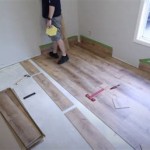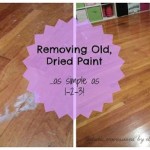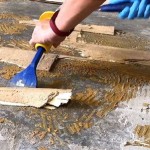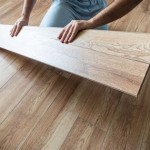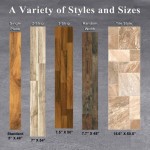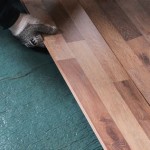How To Fix Damaged Floating Floorboards
Floating floors offer a relatively easy and cost-effective flooring solution. However, they are susceptible to damage from moisture, heavy impacts, and everyday wear and tear. This article outlines methods for repairing common types of damage to floating floorboards.
Assessing the Damage
Before attempting any repairs, assess the extent and type of damage. This assessment will inform the appropriate repair strategy.
- Minor Scratches: Superficial scratches can often be addressed with repair kits or touch-up markers.
- Deep Scratches and Gouges: These may require filling or replacing the affected plank.
- Chips and Dents: Similar to scratches, minor chips can be repaired with fillers, while larger ones might necessitate plank replacement.
- Water Damage: Depending on the severity, water damage can lead to warping, swelling, or buckling. Drying and plank replacement are often required.
- Loose Planks: Loose planks can create tripping hazards and should be re-secured or replaced promptly.
- Gaps Between Planks: Gaps can be caused by temperature fluctuations, improper installation, or loose planks. They can often be closed by tapping the planks together.
- Swelling or Buckling: Typically caused by moisture, this usually necessitates replacing the affected planks and addressing the moisture source.
Repairing Minor Scratches
Minor scratches can often be addressed with readily available repair solutions.
- Repair Kits: These kits typically include wax fillers or colored pencils to blend the repair with the surrounding floor.
- Touch-up Markers: Specifically designed for flooring, these markers can camouflage minor scratches effectively.
- Floor Polish: In some cases, polishing the floor can help minimize the appearance of minor scratches.
Repairing Deep Scratches and Gouges
More significant damage requires more involved repair methods.
- Wood Filler: Apply wood filler to the damaged area, sand smooth once dry, and touch up with matching color.
- Putty: Similar to wood filler, putty can fill deeper gouges and can be sanded and colored to match the floor.
Replacing Damaged Planks
When repairs are insufficient, replacing the affected plank is the optimal solution.
- Disassemble the Floor: Carefully disassemble the floor from the wall closest to the damaged plank, working towards the damaged area.
- Remove the Damaged Plank: Once access is gained, remove the damaged plank.
- Install the Replacement Plank: Insert the new plank, ensuring a tight fit with the surrounding planks.
- Reassemble the Floor: Carefully reassemble the disassembled flooring sections.
Addressing Water Damage
Water damage requires prompt action to prevent further issues.
- Dry the Area: Thoroughly dry the affected area using towels, fans, or dehumidifiers.
- Remove Damaged Planks: Remove any warped, swollen, or buckled planks.
- Address the Moisture Source: Determine and fix the source of the water intrusion to prevent recurrence.
- Replace Damaged Planks: Install replacement planks once the area is completely dry.
- Allow for Acclimation: Allow new planks to acclimate to the room's temperature and humidity before installation.
Fixing Loose Planks and Gaps
Loose planks and gaps can be addressed with several techniques.
- Tapping Planks Together: Use a rubber mallet and a tapping block to gently tap loose planks back into place and close minor gaps.
- Adding Adhesive: If tapping is insufficient, a small amount of wood glue can be applied to the tongue-and-groove joints before reassembling the planks.
- Using a Pull Bar: A pull bar can help tighten planks along the edges of the room or in tight spaces.
Preventing Future Damage
Proactive measures can significantly extend the life of floating floors.
- Use Furniture Pads: Place felt pads under furniture legs to prevent scratches and dents.
- Doormats and Rugs: Use doormats and rugs at entrances to trap dirt and moisture.
- Clean Spills Promptly: Clean up spills immediately to prevent water damage.
- Maintain Proper Humidity: Maintain appropriate humidity levels in the room to prevent warping and buckling.
- Sweep or Vacuum Regularly: Regular cleaning prevents abrasive particles from scratching the floor surface.
By following these guidelines, one can effectively address common issues and extend the lifespan of their floating floor.

How To Repair Laminate Flooring The Home

How To Replace Damaged Flooring Plank Diy

How To Prevent Repair Water Damage Laminate Flooring Claude Browns

Step By Guide On How To Fix A Laminate Floor That Got Wet

How Do I Camouflage Water Damaged Laminate Flooring Hometalk

How To Fix Scratches On Laminate Flooring Directflooring Direct

Laminate Floor Repair Diy Family Handyman

How To Repair Laminate Flooring The Home

How To Repair Laminate Flooring With Water Damage Dry Force

How To Repair Laminate Flooring The Home
See Also
